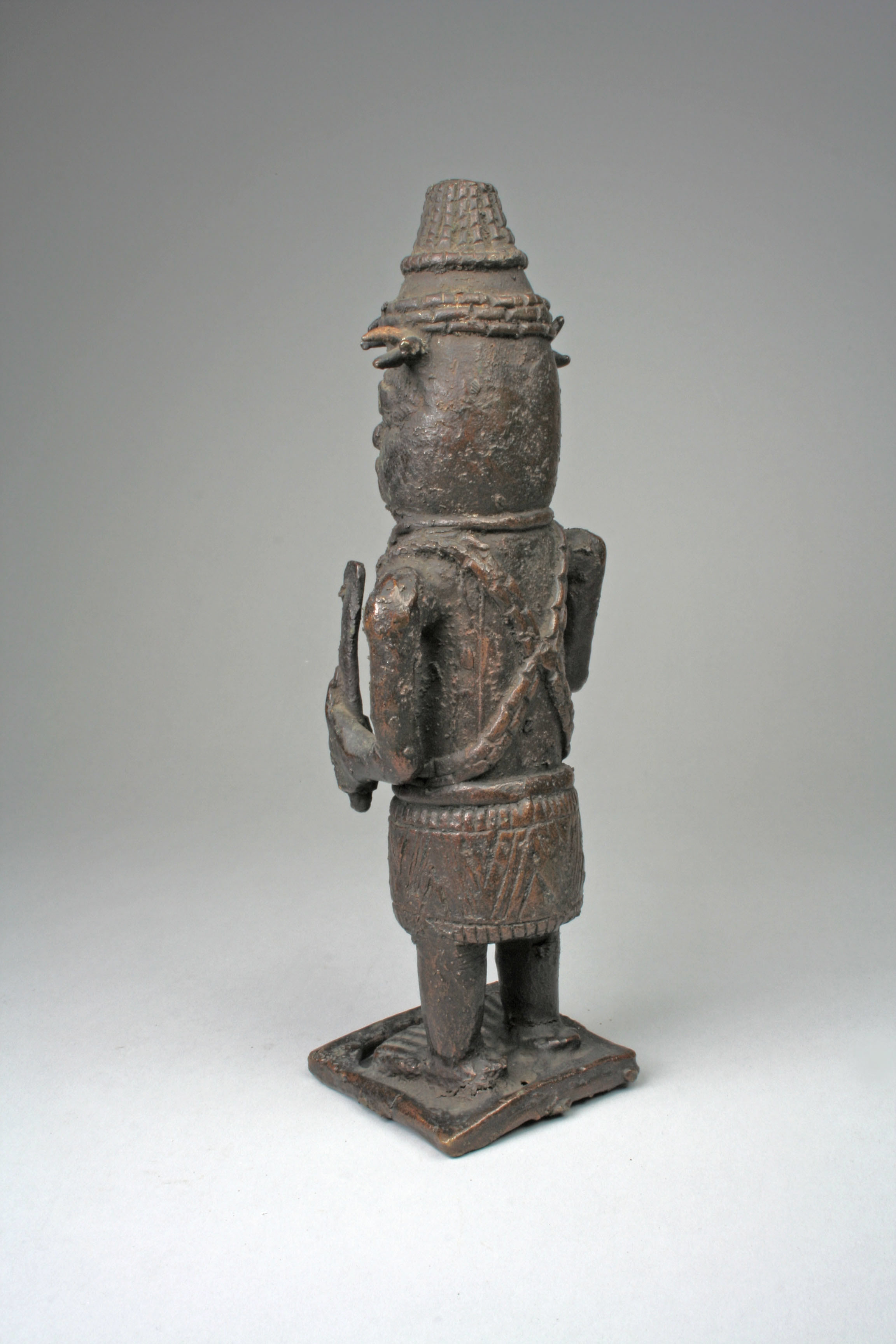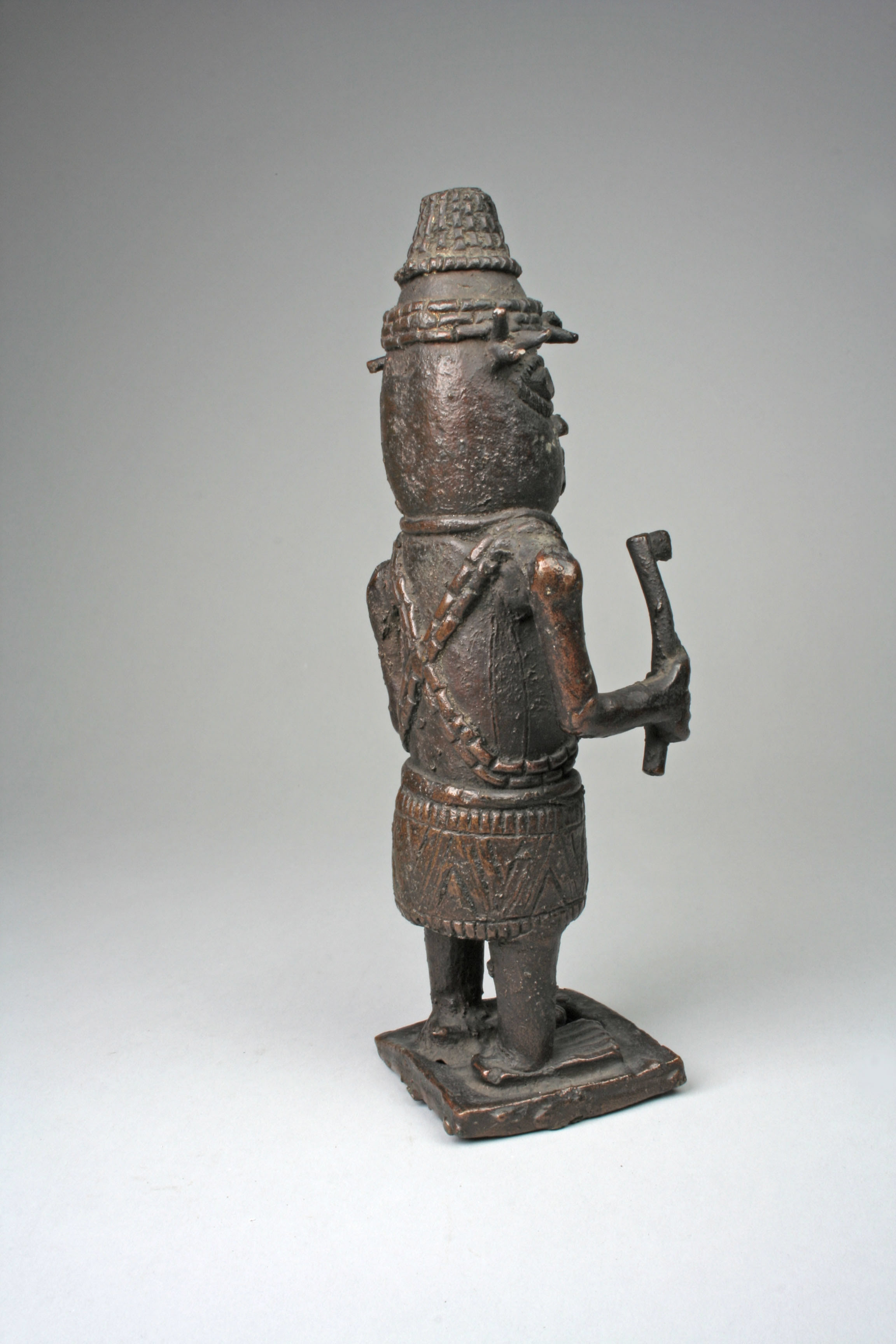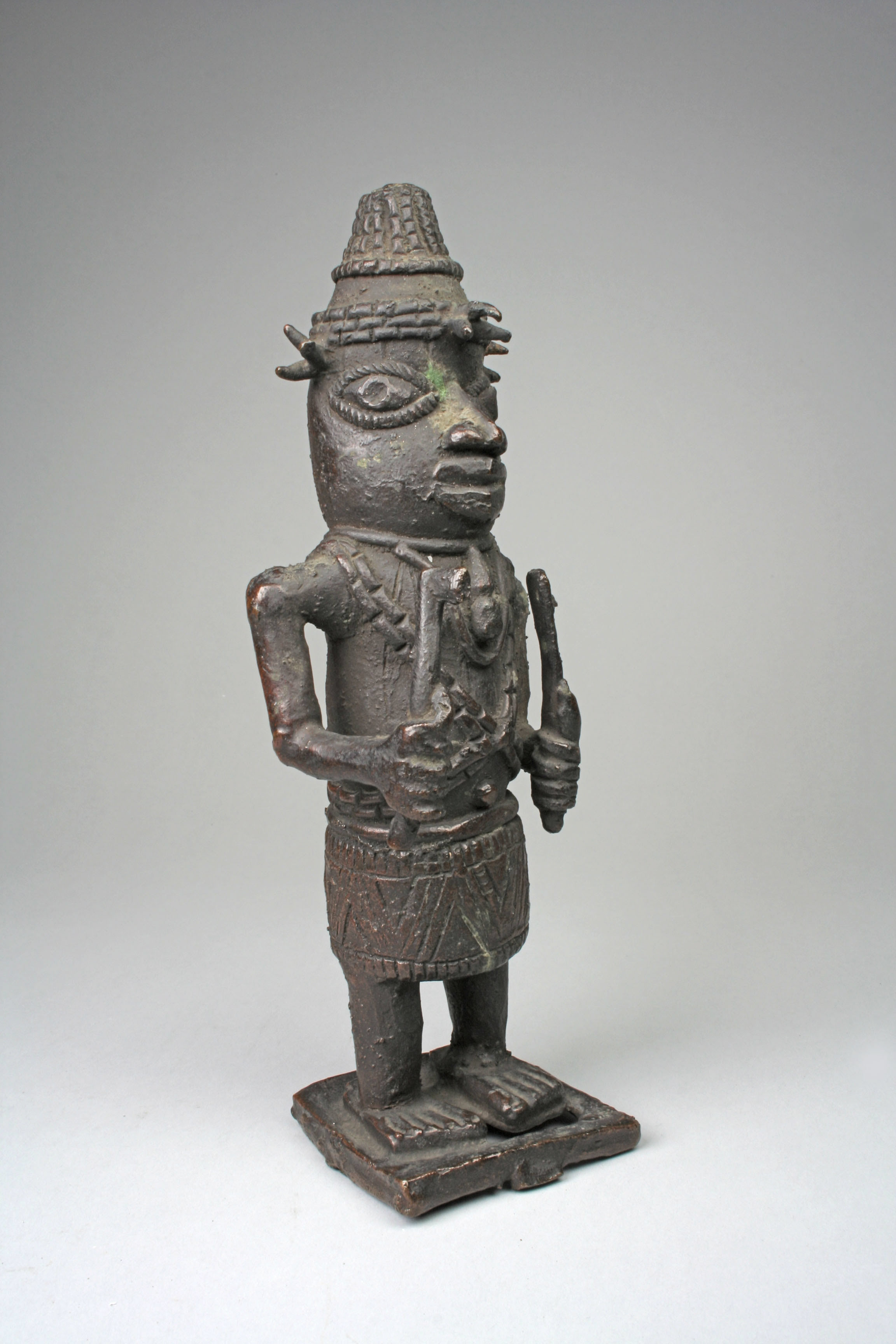Figure: Court Official with Hammer and Staff
Not on view
At its origins, the centralized city-state of Benin was founded by Edo-speaking peoples. The accounts by official court historians and descriptions provided by visitors evoke a vibrant cultural center continually redefined by its leadership through shifting internal and external power dynamics. According to oral tradition, circa 1300, Edo chiefs are reputed to have reached out to the leader of neighboring Ife, Oranmiyan, to establish a new divinely sanctioned royal dynasty. Since then, the investiture of Benin’s rulers to the title of obas has conferred upon them at once a role of chief priest officiating in important religious ceremonies and presiding over an elaborate structure of palace officials. During the fifteenth century reign of Oba Ewuare, Benin’s armies were formed and the fortification of its capital with a massive wall undertaken. In parallel, delegations of Portuguese traders assiduously sought to secure exclusive commercial treaties with this leader of the region’s most powerful polity. At its height in 1500, Benin’s authority extended to the Niger delta in the east and to the coastal lagoon of Lagos in the west. Its major exports of pepper, textiles, and ivory were exchanged for copious quantities of imported metals. This access to an influx of brass led to an explosion of creativity by court artists who transformed it into works for the palace ranging from ancestral portraits, positioned on royal altars, to decorative plaques depicting the oba, his courtiers, and foreign interlocutors. From the earliest such exchanges, those Europeans commissioned exquisite ivory artifacts from Edo carvers for princely collections back home.
For nearly five hundred years, Benin’s independent leaders firmly established the terms of engagement with Portuguese, Dutch, and French agents and effectively represented their own interests. Despite the demands of the Atlantic Slave trade, for centuries they limited their participation to selling prisoners of war to the Portuguese. Historians have suggested that this only changed during the eighteenth century when escalation of contests among regional polities created a demand for access to European firearms. During that later period instability engendered by disputes over succession and civil war was further fueled through the exchange of captives for firearms. A number of internal and external developments that followed in the nineteenth century impacted the standing and vulnerability of Benin’s monarchs. Under Oba Adolo, the balance of power appears to have favored the more powerful chiefs and by the early years of his successor Ovonramwen’s reign, bitter feuds and seditious conspiracies divided their ranks. This shift was manifest in the increased emphasis on the oba’s ceremonial and ritual activities and the aggrandizement of chiefly residences that outstripped the palace. Concurrently significant changes were unfolding around Benin: Islam was in the ascendant in the rival state of Oyo; Christianity was embraced by the southern Yoruba; abolition of the slave trade was leading to the demise of the Itsekiri monarchy; and local British officials were increasingly determined to undermine the oba’s authority.
Due to rights restrictions, this image cannot be enlarged, viewed at full screen, or downloaded.
This artwork is meant to be viewed from right to left. Scroll left to view more.





